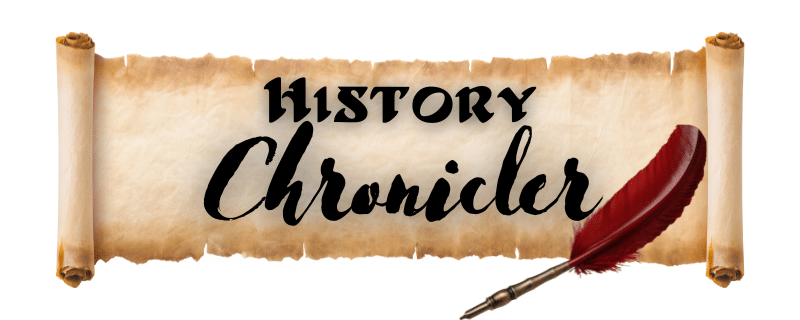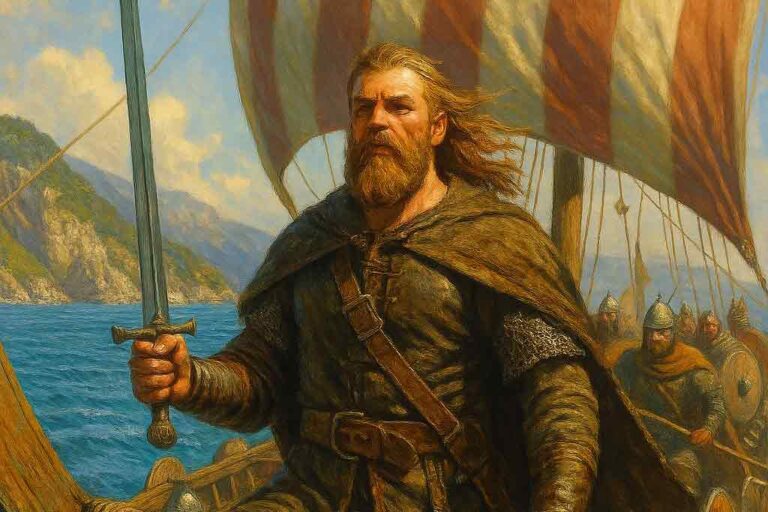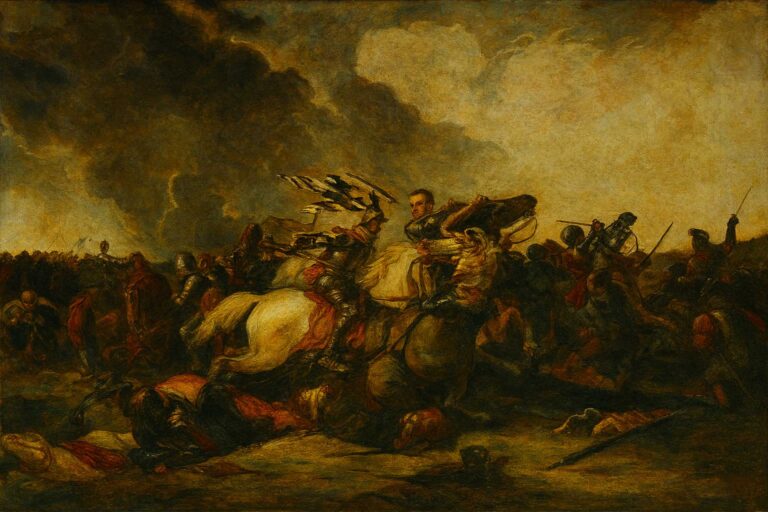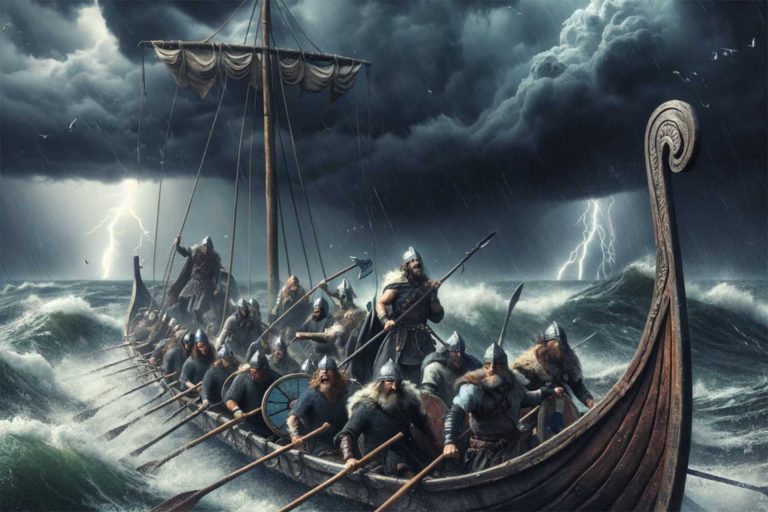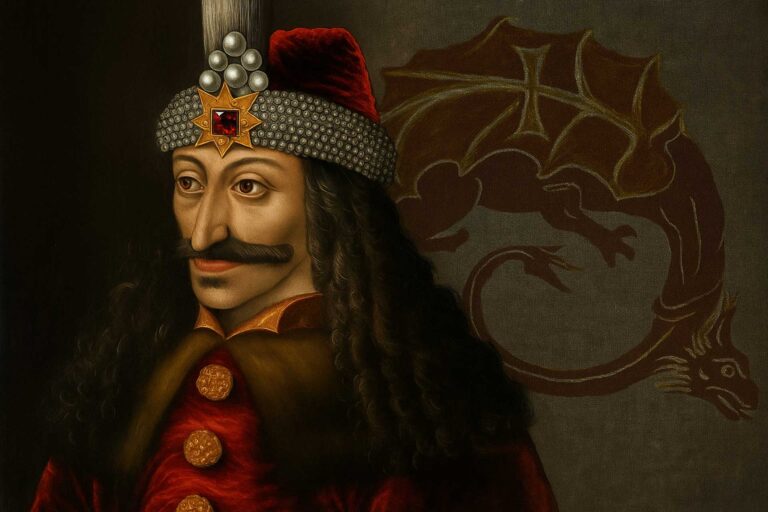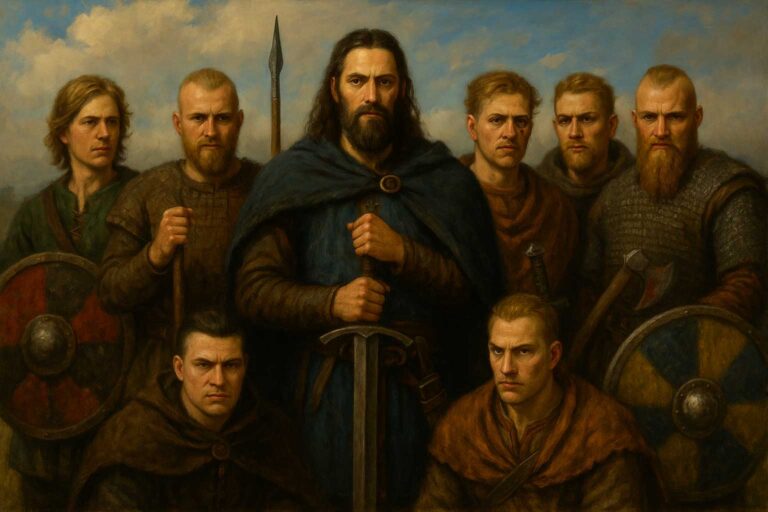Brian Boru: The High King Who United Ireland
A King Born of Chaos
Ireland had existed for centuries before it became a nation. Tribal, dynastic, and Viking power bases in this fractious land carved out feudal kingdoms from the patchwork coast to the highlands. Brian Boru was born to the Dál gCais clan in the province of Munster around 941. As a young man, he saw firsthand the violent incursions of both Norsemen and his native Irish clans. Brian, in turn, would transcend this strife. He refused to let the fractured state of Ireland be permanent and set out on an unprecedented campaign for unity.
Brian would become Ireland’s High King, a title that had historically been considered a hollow one. He reigned supreme through a combination of military might, diplomatic skill and religious patronage. His feats lent unity to a disparate land in a way never before seen or replicated in the earlier centuries of Ireland’s history.
Ireland Before Brian Boru
Centuries before Brian Boru’s ascent, Ireland had been splintered and balkanised into dozens of petty kingdoms (túatha). Rival kings fought each other constantly over local matters like land, cattle, or vengeance. No king had managed to hold a protracted, undisputed control over the entire island, and loyalties changed regularly, so any period of stability was always brief. People generally identified themselves with their tribe or clan more than with any national identity.
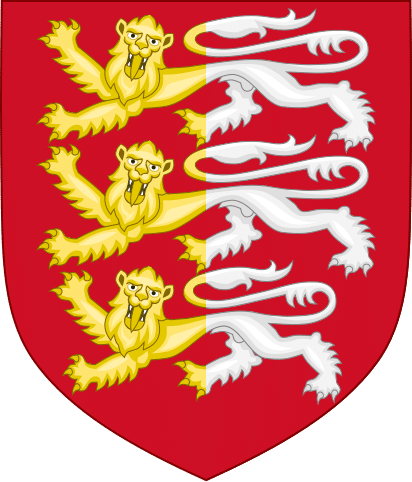
In this time of division and petty warring, a title of High King of Ireland (Ard Rí na hÉireann) had existed more as an ideal than a reality. The great kings who took the title usually wielded little authority over the petty kings besides convening assemblies or launching intermittent military campaigns against their will. The concept of a High King remained a political and diplomatic ideal rather than an established government with the regional kings refusing to submit to an absolute authority.
Making matters worse for the Irish was the growing Viking threat. Norse raiders began pillaging Irish monasteries and coastal settlements since the late 8th century and had by the 10th century founded a series of fortified towns (longphorts) in key locations such as Dublin, Limerick, Waterford, Cork, Wexford, and Lough Erne.
In a short time, the Vikings went from mere raiders to settlers, and they began to play a significant role in Irish political and mercantile affairs. Viking rulers in places like Dublin wielded immense authority, in effect making them sovereign and independent.
Rise of a King: Brian Boru’s Early Life and Ambition
Brian Boru was born around 941 in the province of Munster to a family of the Dál gCais tribe. This tribe was one of the many tribes that made up the Irish aristocracy and was a minor one. Brian Boru’s family was from an area around the modern day County Clare and the town of Killaloe. The areas around Munster had long been plagued by violence and disloyalty. The Vikings still had a strong presence in several Irish cities. In addition, the Dál gCais were fighting to establish themselves as a force in Ireland against both other Irish dynasties and the Vikings.
Brian had an older brother, Mahon, who became the first Dál gCais chieftain and King of Munster. Mahon and his wife served as guides to young Brian as he grew up. He received his training on both the battlefield and in the political arena during Mahon’s rule. Unfortunately for Brian Boru, Mahon was eventually killed by rival clans and Norse-aligned Irish. This changed Brian. He was driven by the loss of his brother and the idea of taking back what was rightfully his and his people. He would become the new Dál gCais chieftain and make a change in Ireland.
In the following years, Brian led his army to dominate much of the western coast of Ireland. He was at war with both the Vikings and his Irish rivals. He was a disciplined military leader and conducted many swift attacks to bring his rivals low. Brian would use this time not just to avenge his brother, but to solidify his own claim to the Kingdom of Munster. He would also establish the fact that the Dál gCais tribe was a legitimate force in Irish politics.
The 970’s saw Brian take over the leadership of Munster and become the unchallenged King of Munster. He and his armies would dominate not just the normal Dál gCais lands but expand further, making alliances with local rulers through force and diplomacy. Brian was a tactical genius who led his men to many battlefield victories while also earning the respect of regional rulers and his warriors. He did not just seek to defend his lands but to expand and grow his influence.
The idea of High Kingship to Brian Boru was not a title, but a way to truly impact Ireland. Brian saw that Ireland was not in a good place and was vulnerable to foreign encroachment because of the fractious nature of Irish politics. Brian would begin to see that it might be possible to unite Ireland under one banner. He would set out to do just that, starting with Munster.
Military Campaigns and Political Mastery
Warfare and politics went hand in hand for Brian Boru. Once secure in Munster, Brian set his sights on other Irish kings. In a series of campaigns, he coerced his opponents into submission, often permitting them to keep local authority in return for tribute and fealty. This approach avoided bloodshed where possible and expanded his influence well beyond Munster.
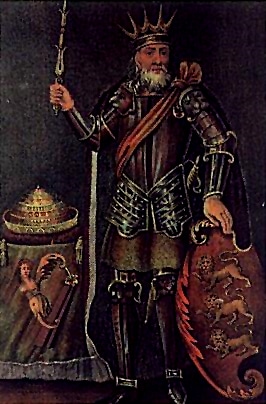
Brian’s conquests culminated in his defeat of the Viking fortress of Limerick in 968. Not only was he able to expel the Norse from Munster, but he also seized a large amount of treasure, arms, and ships, which would be helpful in future campaigns. The victory at Limerick marked a turning point in Irish resistance to Norse incursions, and Brian’s fame as a war leader spread.
Brian recognized that force alone would not be enough to achieve lasting unity. He also sought to consolidate his position through political means. Brian married his children to powerful families in Leinster and other regions. This not only strengthened his own claim to legitimacy but also helped to create a network of alliances across tribal lines. Diplomacy and marriage became tools to create a tapestry of support that discouraged rebellion and promoted cooperation.
In 1002, Brian Boru became High King of Ireland, the first southern king to do so in several hundred years. Traditionally, the title had been the prerogative of the northern Uí Néill dynasty, but Brian now sought to rule in fact as well as name. His ascension to the High Kingship broke the centuries-old stranglehold of the Uí Néill and marked the first time a non-Uí Néill king had such authority over all of Ireland.
Brian did not see the role of High King as purely ceremonial. In fact, he took the office very seriously, traveling around Ireland to extract oaths of allegiance and tribute from local rulers. Brian’s reign was characterized by an active exercise of power that had been largely absent in previous High Kings. Through a combination of strength and astute diplomacy, Brian Boru reshaped the office into something resembling a national leadership.
The campaigns of Brian Boru were more than just military conquests. There were also efforts to reshape Ireland’s political landscape. With each victory and alliance, he built a more unified island, one where Norse raiders were pushed back and regional kings looked to a single figure for leadership. Brian’s High Kingship was not only a personal achievement but also a symbol of a new vision for Ireland’s future.
The Unification of Ireland
During his reign, Brian Boru created a level of stability in Ireland not seen in previous years. It should be noted that while it had been a relatively constant state of war within Ireland since the establishment of the regional kingship, there was an ability to feel a certain oneness of rule not previously established in the country. For example, Brian’s method of overlordship allowed the local kings and rulers to pay him tribute while still operating as they wished for the most part. This also allowed for a more peaceful relationship between the Irish and the Norse, as many of the local rulers also paid tribute to Brian.
Brian also cultivated a relationship with the Church, a common practice for many kings at the time. He would gift land and money to key monastic centers, and he supported ecclesiastical reform, allowing the Church to become a more powerful unifying force. By aligning himself with the country’s spiritual leaders, he increased his power and influence in both spiritual and temporal matters. He used his relationship with the Church not only to legitimize his rule but also to reform the legal system, making it more consistent.
These reforms were not revolutionary, and the system was still very much based around Brehon Law, but it did allow for a fairer and more just society. The combination of these reforms, Brian’s strong leadership, and the establishment of a more centralized form of government allowed Ireland to be a much more unified country than it had been previously.
This relationship between the various Irish rulers and the Norse also applied to Brian’s rule. Despite many conflicts with the Norse, there was a general respect between the two. This is because many Norse-Gaelic rulers, including those in Dublin, had also come to realize that peaceful coexistence was far more profitable. Brian was a pragmatic ruler who used diplomacy to maintain power and influence over his former enemies.
The relationship among the different factions in Ireland was neither perfect nor permanent, but it enabled Ireland to function as a single political body for the first time in its history. While he did not eliminate the country’s tribal identity, he did create a sense of unity that had not been possible in previous years. By the early 11th century, Brian Boru was able to make Ireland, for a time, speak with one voice.
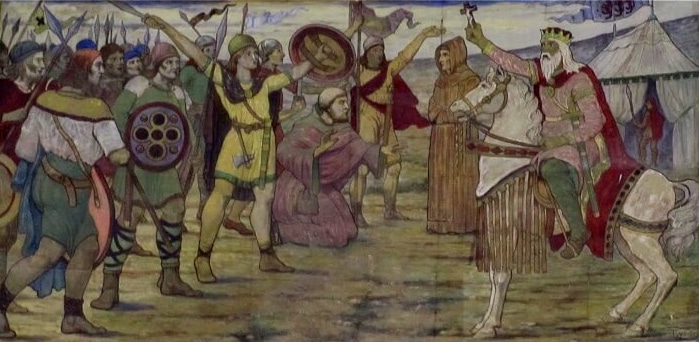
The Battle of Clontarf (1014)
The Battle of Clontarf was the apogee of Brian Boru’s life. The Good Friday battle, April 23, 1014, was caused by a rebellion against Brian’s power led by Máel Mórda, the King of Leinster. The Leinstermen had allied with Sigtrygg Silkbeard, the Norse king of Dublin, who had attracted Viking mercenary support from Orkney and elsewhere. The result was a coalition force that threatened Brian’s vision of a single Ireland.
The engagement took place outside of Dublin on the coastal plains of Clontarf and was one of the bloodiest in Irish history. In the most contemporary accounts, the battle was ferocious and all-day. Casualties were high on both sides, and the battle seemed to rage on without resolution. The enemy, despite being led by two kings, was ferocious, but Brian’s army of hardened warriors, led by his son Murchad, fought without yielding, and finally the Norse and Leinstermen were put to flight.
The victory was Pyrrhic. After the battle, as the day was dying down, a small group of retreating Norsemen stumbled on Brian’s tent and killed the High King as he knelt in prayer. The Viking leader was a certain Brodir, although this is the subject of some debate. Brian had been on the wrong end of many sword blows and was about 73 years old at his death. His army had won a hard-fought victory but at a significant cost. Ireland’s greatest unifier was dead at the height of his fame.
In the years after Clontarf, the battle became the stuff of legend and historical debate. For many years, it was assumed that the battle marked the end of Norse power in Ireland, but in modern times, this view has been revised and contextualized. There were Norse in Ireland for many years after Clontarf, but in a more passive and commercial role, and their military might never fully recovered. The fact is that the Vikings were significantly weakened, but their contribution to Ireland was not fully ended at Clontarf.
For the Irish, the battle and Brian’s last stand had become a symbol of national importance and resistance to foreign interference. Brian was a man who wielded great power and was willing to fight both his Irish neighbors and his Norse enemies. After his death at Clontarf, Brian became more a legend than a mere man, which was an important factor in the memory of the battle itself.
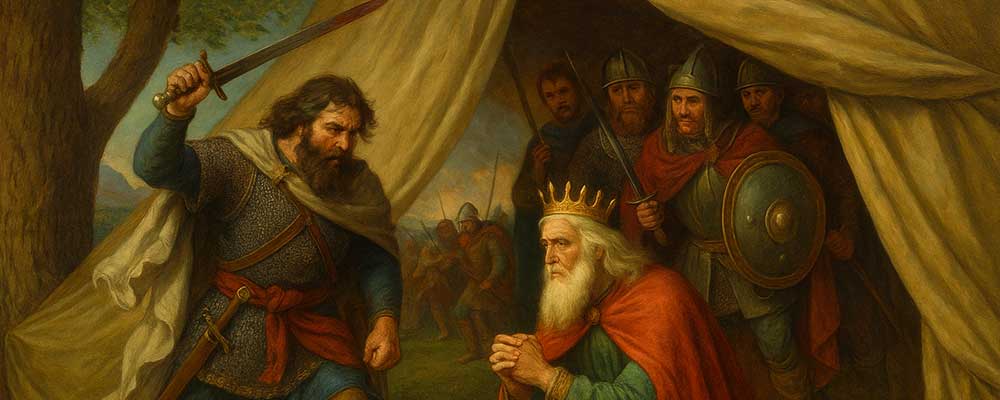
Legacy of Brian Boru
Brian Boru has since been established as a national hero. The foreign invasions and internal conflicts of Brian’s era created the political and social environment for the birth of the notion of a united Ireland. In the wake of Brian’s death and the Battle of Clontarf, there is little evidence of Irish unity, a fact that has lent some support to later Irish nationalism and the idea that his leadership prevented the loss of a true Irish identity.
Brian is also notable for founding the O’Brien dynasty, which has produced several prominent figures in Irish history. All O’Briens can claim descent from the Dál gCais through Brian and are, therefore, among the most distinguished in Ireland. O’Brien is also the surname of many Irish nobles, especially those in Munster and Thomond. Brian’s name was often referenced and his supposed descendants called upon to take leadership roles, not only in his Munster kingdom, but also in later medieval Irish politics.
Brian’s role as the High King of Ireland ended upon his death. The High Kingship title continued to be passed on, but Brian was the last High King to command any real power over other kings in Ireland. When Brian died, the kingdoms returned to their former status, with only occasional tribute and consultation between the rulers of the various Irish provinces.
Brian became a legendary figure as portrayed in many chronicles, such as the Cogadh Gaedhel re Gallaibh (The War of the Irish with the Foreigners), which glorified him as a hero who fought to maintain order and unity. The native Irish would later be portrayed as a symbol of resistance against foreign domination, exemplified by Brian. Some used his memory in later Irish nationalism to validate their aim of restoring Ireland’s former identity. Brian Boru is remembered in song and story throughout Irish history as a great king of Ireland and a unifier of the Irish.
A Legacy Forged in Unity
Emerging from humble beginnings as a fierce warrior of the Dalcassian clan, Brian Boru (c. 927-1014) rose to become the High King of Ireland in 1002. His era was one of transformation as he unified competing Irish kingdoms, curtailed Norse influence, and laid the groundwork for an Ireland more united than had ever been known before. From battlefield victories to political alliances, Brian Boru’s ambition and leadership ushered in a short-lived era of peace and security that would forever be defined by the Battle of Clontarf—a monumental, pyrrhic victory.
Beneath the historical accounts of Brian Boru’s rise to power and influence lies a complex narrative that continues to resonate in modern Ireland. He is a figure that stirs the imagination and prompts reflection on the nature of leadership, the struggles for power, and the quest for unity in a land long characterized by division. His life and times offer a window into a pivotal moment in Irish history, and his enduring legacy as a symbol of Irish nationalism speaks to the deep-seated yearnings for a united Ireland.
